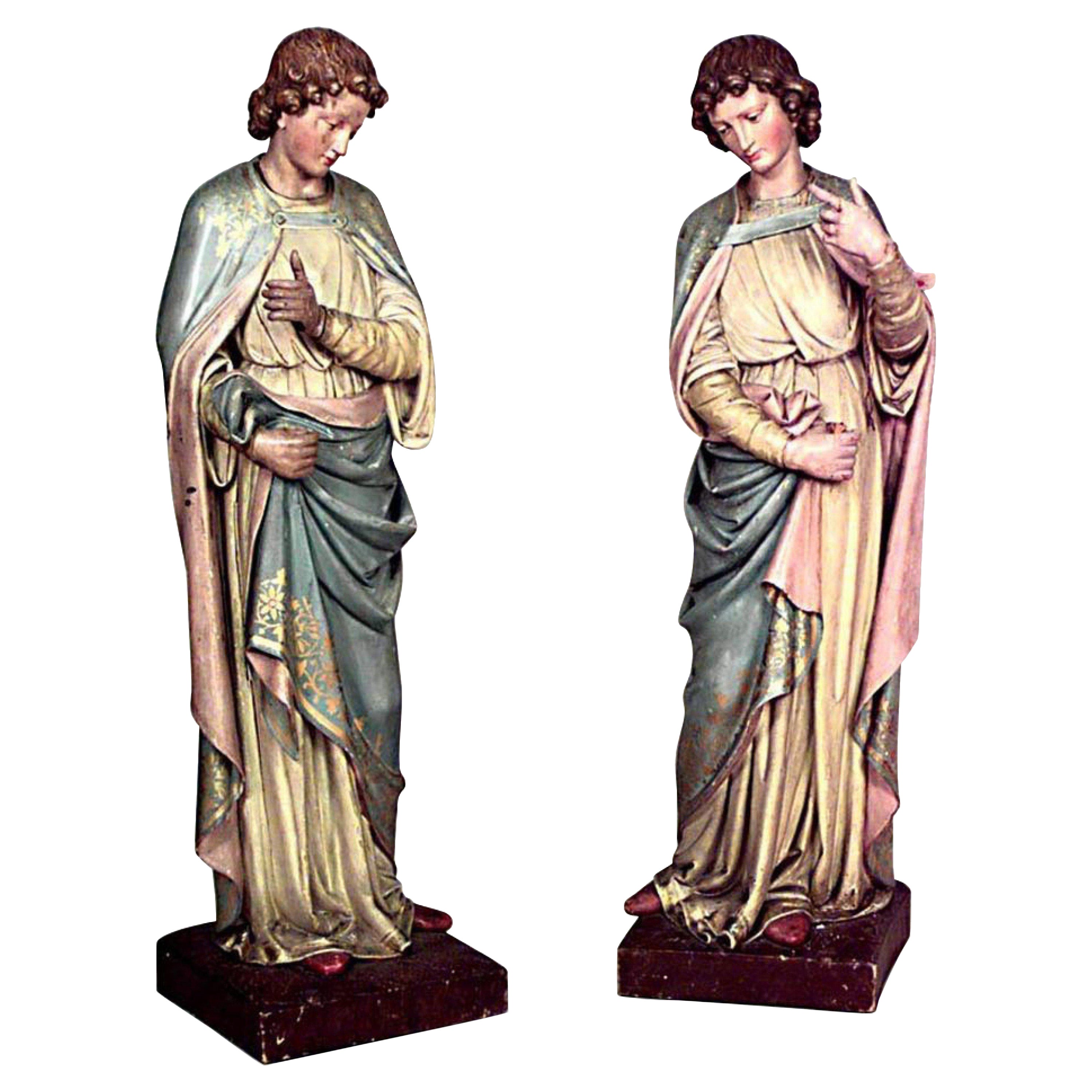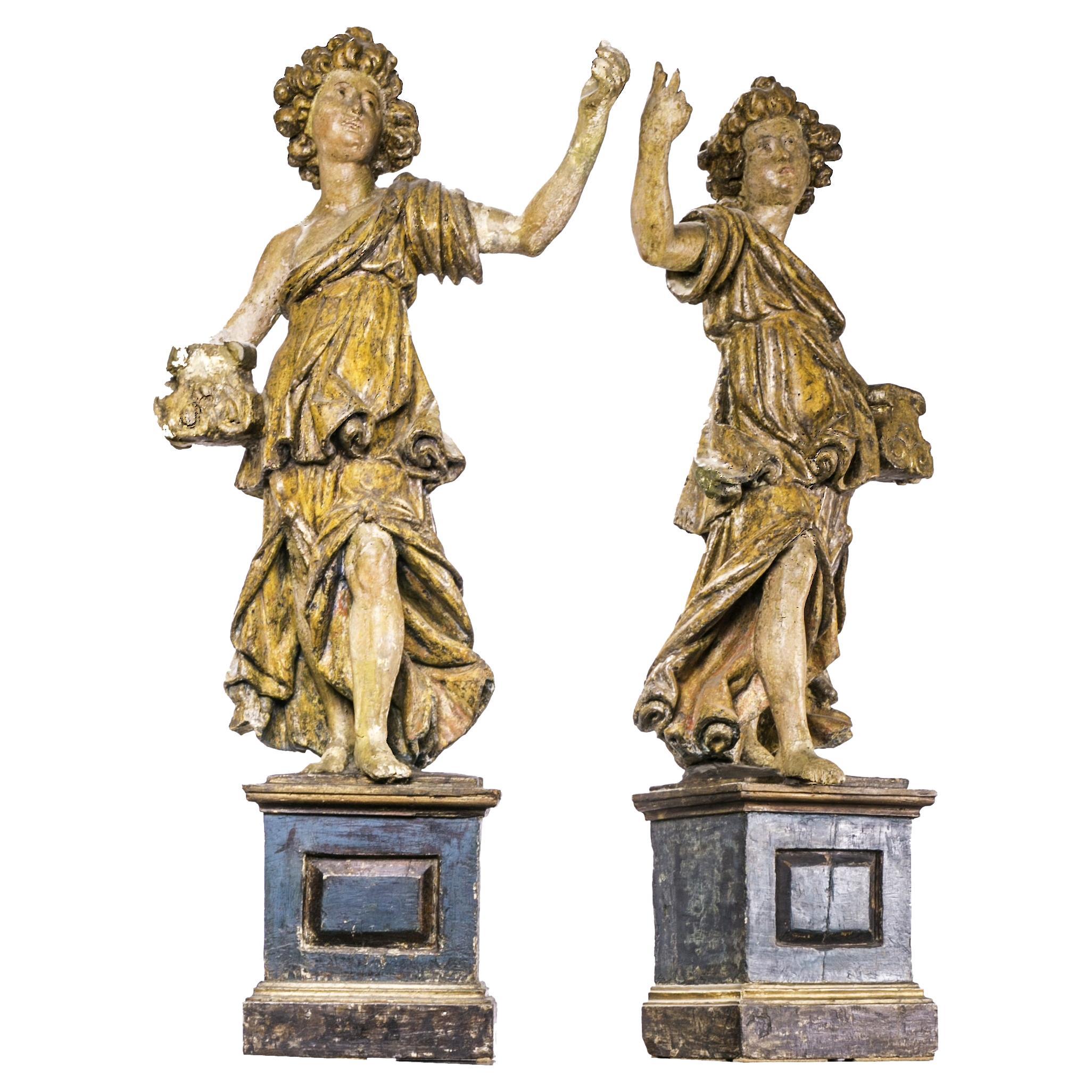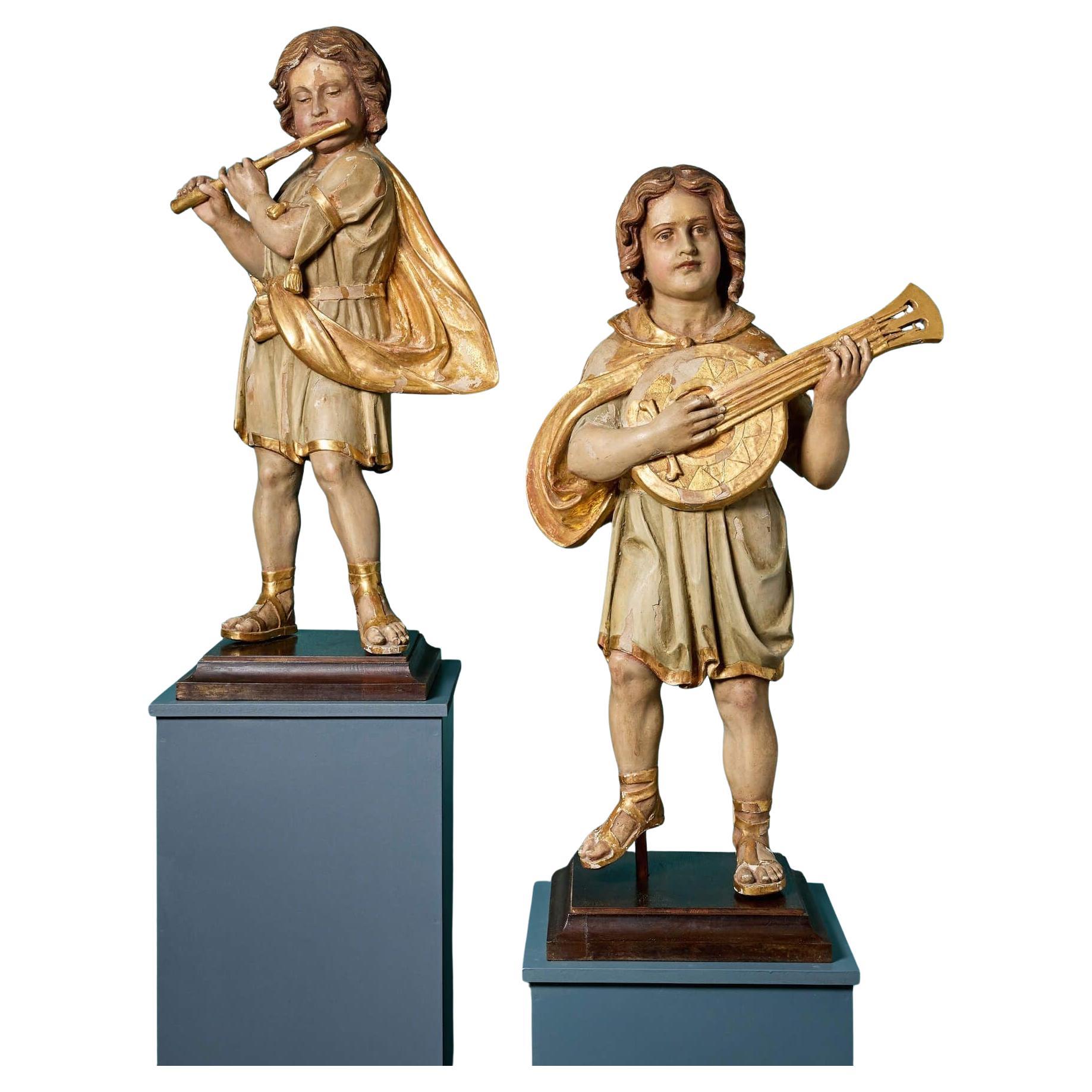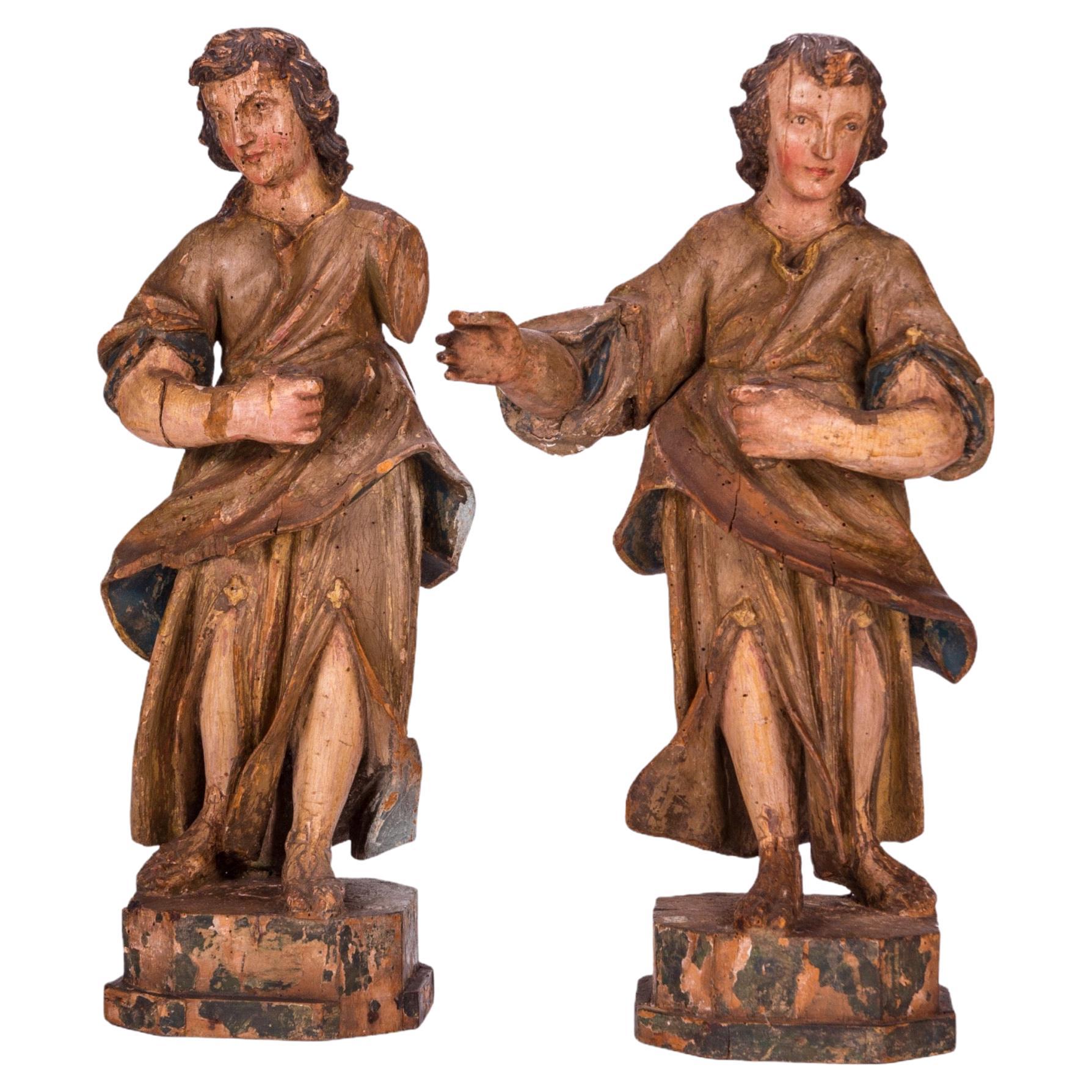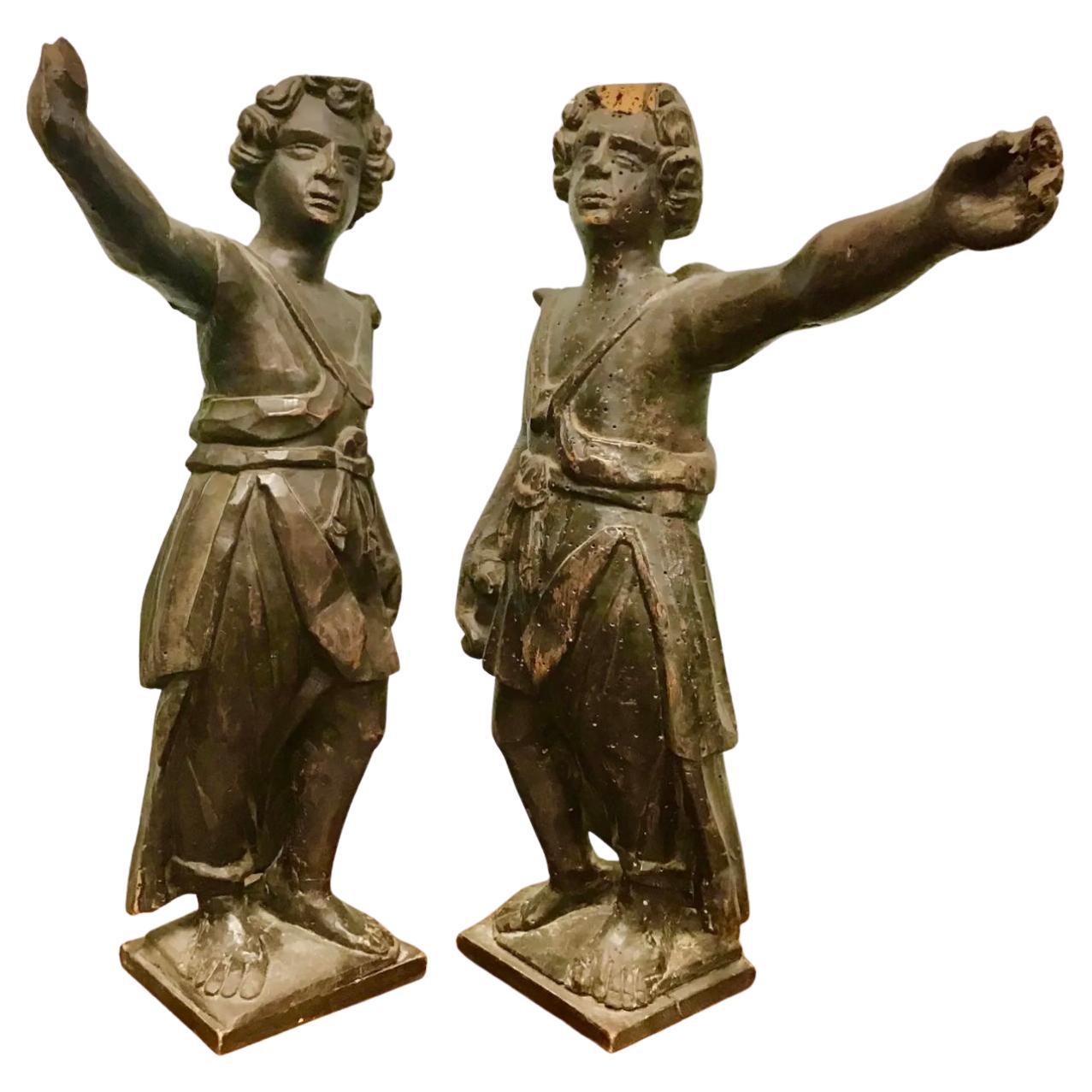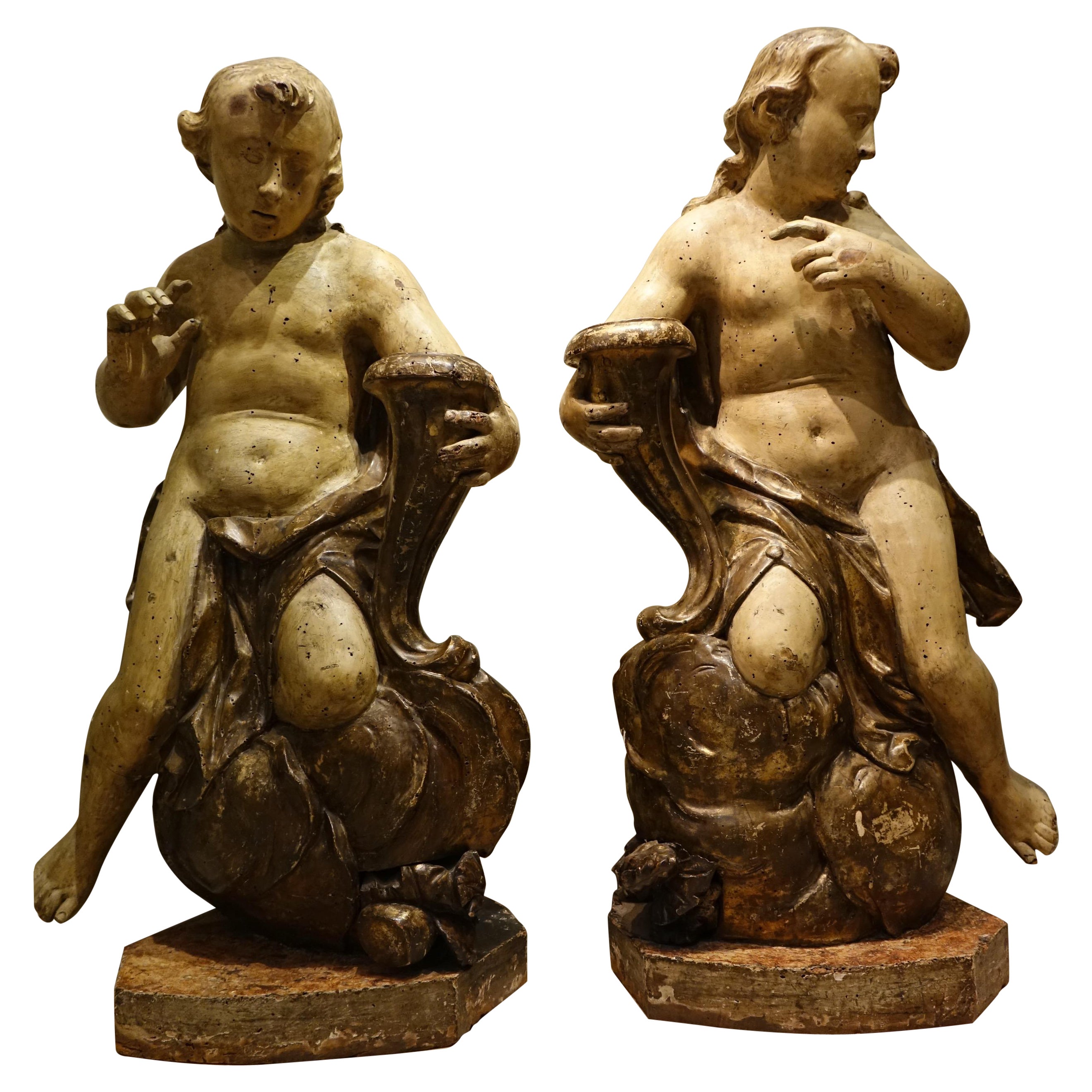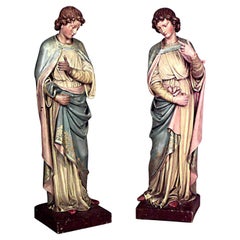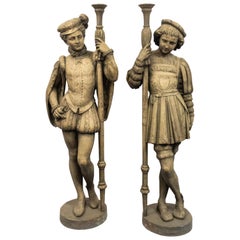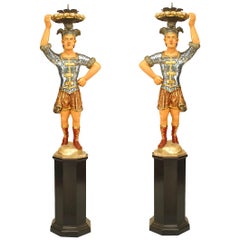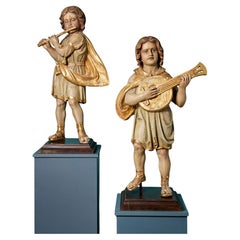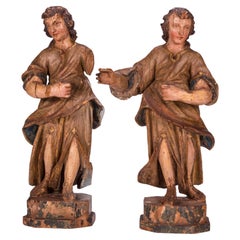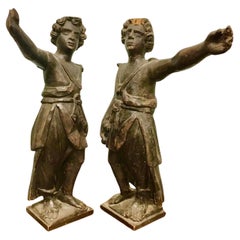Items Similar to Pair Important Large Painted and parcel Gilt Figuires Italian
Want more images or videos?
Request additional images or videos from the seller
1 of 19
Pair Important Large Painted and parcel Gilt Figuires Italian
$15,000per set
£11,286.11per set
€13,035.69per set
CA$21,198.92per set
A$23,004.05per set
CHF 12,190.12per set
MX$282,133.53per set
NOK 150,851.88per set
SEK 142,547.04per set
DKK 97,317.95per set
About the Item
PAIR of Italian (early 19th Century) painted and parcel gilt carved standing figures of a young man and lady dressed in traditional cloths (PRICED AS PAIR)
- Dimensions:Height: 33 in (83.82 cm)Width: 11 in (27.94 cm)Depth: 7 in (17.78 cm)
- Sold As:Set of 2
- Style:Renaissance (Of the Period)
- Materials and Techniques:
- Place of Origin:
- Period:
- Date of Manufacture:Circa 1850
- Condition:Wear consistent with age and use.
- Seller Location:Queens, NY
- Reference Number:Seller: REG51691stDibs: LU977940450152
About the Seller
4.9
Recognized Seller
These prestigious sellers are industry leaders and represent the highest echelon for item quality and design.
Platinum Seller
Premium sellers with a 4.7+ rating and 24-hour response times
Established in 1939
1stDibs seller since 2013
1,006 sales on 1stDibs
Typical response time: <1 hour
- ShippingRetrieving quote...Shipping from: Long Island City, NY
- Return Policy
Authenticity Guarantee
In the unlikely event there’s an issue with an item’s authenticity, contact us within 1 year for a full refund. DetailsMoney-Back Guarantee
If your item is not as described, is damaged in transit, or does not arrive, contact us within 7 days for a full refund. Details24-Hour Cancellation
You have a 24-hour grace period in which to reconsider your purchase, with no questions asked.Vetted Professional Sellers
Our world-class sellers must adhere to strict standards for service and quality, maintaining the integrity of our listings.Price-Match Guarantee
If you find that a seller listed the same item for a lower price elsewhere, we’ll match it.Trusted Global Delivery
Our best-in-class carrier network provides specialized shipping options worldwide, including custom delivery.More From This Seller
View AllPair of Italian Renaissance Religious Figures
Located in Queens, NY
PAIR of Italian Renaissance style polychromed large standing religious figures wearing blue cape (19th Century)
Category
Antique 19th Century Italian Renaissance Religious Items
Materials
Chrome
$22,500 / set
Pair of Italian Renaissance Iron Page Figures
Located in Queens, NY
Pair of Italian Renaissance style (19/20th Cent) iron life size page figures holding torch.
Category
Antique Late 19th Century Italian Renaissance Revival Sculptures
Materials
Iron
$48,000 / set
Pair of Italian Venetian Polychromed Figures
Located in Queens, NY
Pair of Italian Venetian painted figures with polychromed blue shirts & red shorts and feathered headdress candle stand and supported on an 8 sided ebonized...
Category
Antique 19th Century Italian Renaissance Revival Figurative Sculptures
$28,500 / set
Pair of Renaissance Polychromed Kneeling Figures
Located in Queens, NY
Pair of Italian Renaissance style (19th Cent) polychromed life size kneeling figures.
Category
Antique 19th Century Renaissance Statues
$18,500 / set
Pair of 19th Century Italian Renaissance Styl Polychrome Wooden Cavalier Figures
Located in Queens, NY
Pair of Italian Renaissance style (19th Century) carved and painted large figures of cavaliers holding mandolin and spear.
Category
Antique 19th Century Figurative Sculptures
Materials
Wood
Pair of Continental 19th Century Majolica Figures
Located in Queens, NY
"Pair of Continental (19th Century) Majolica putti figures, each supported by a yellow stump and green glazed pedestal base. One curly haired figure is holding a chaff of wheat (Fall...
Category
Antique 19th Century European Biedermeier Figurative Sculptures
Materials
Ceramic
You May Also Like
Pair of carved and lacquered angels from 1700s Italy
Located in Cesena, FC
Carved and lacquered angels from the 1700s.
Angels all original, never restored.
Wood carvings in the round, carved, lacquered and gilded with "Mecca" technique.
The lacquered com...
Category
Antique Early 18th Century Italian Neoclassical Figurative Sculptures
Materials
Wood
Pair of Large Italian Ecclesiastical Sculptures c.1800
Located in Wormelow, Herefordshire
A pair of large antique Italian ecclesiastical walnut sculptures later mounted on bespoke oak plinths dating to circa 1800.
In an impressive large scale, these musical figures offer...
Category
Antique Early 19th Century Italian Georgian Figurative Sculptures
Materials
Wood, Walnut
Angelic Carved Wood Sculptures, 16th Century
Located in North Miami, FL
Pair of 16th Century Italian carved polychromed angelic sculptures.
Category
Antique 16th Century Italian Renaissance Figurative Sculptures
Materials
Gold Leaf
$9,375 Sale Price / set
25% Off
18th Century Italian Carved Wood Sculptures, a Pair
Located in Bradenton, FL
Beautiful pair of antique carved figurines. Italian, circa 1780, the tall sculptures depict two men, probably soldiers, in flowing robes with one arm out stretched.
The elegant fig...
Category
Antique 18th Century Italian Neoclassical Figurative Sculptures
Materials
Wood
Pair of large baroque statues , Italy Genova 17th century
Located in PARIS, FR
Pair of large statues carved in the round, probably representing cerulean angels (although there is no evidence of wings on the back), or allegories of fortune (in which case we can ...
Category
Antique 17th Century Italian Baroque Figurative Sculptures
Materials
Wood
17th Century 'Baroque' Pair of Italian Carved and Polychromed Sculptures
Located in North Miami, FL
17th Century (Baroque) pair of Italian carved and polychromed figures. Each statue is holding a torchere and are mounted on their original turned wooden faux marble column.
Category
Antique 17th Century Italian Baroque Figurative Sculptures
Materials
Wood, Paint
$15,960 Sale Price / set
20% Off
More Ways To Browse
Roman Armour
Sculpture Nike
Statue Fragment
Statues Of Angels
Wood Mermaid
Wood Sculpture Boat
18th Century Porcelain Figures
1900 Bronze Statue
19th Century Italian Porcelain Figurines
A Santini
Alloy Sculpture
Angel Kneeling
Antique Costa Rica
Antique German Bisque
Antique Gold Pan
Art Deco Goddess
Art Deco Resin Sculpture
Black Egypt Sculpture
